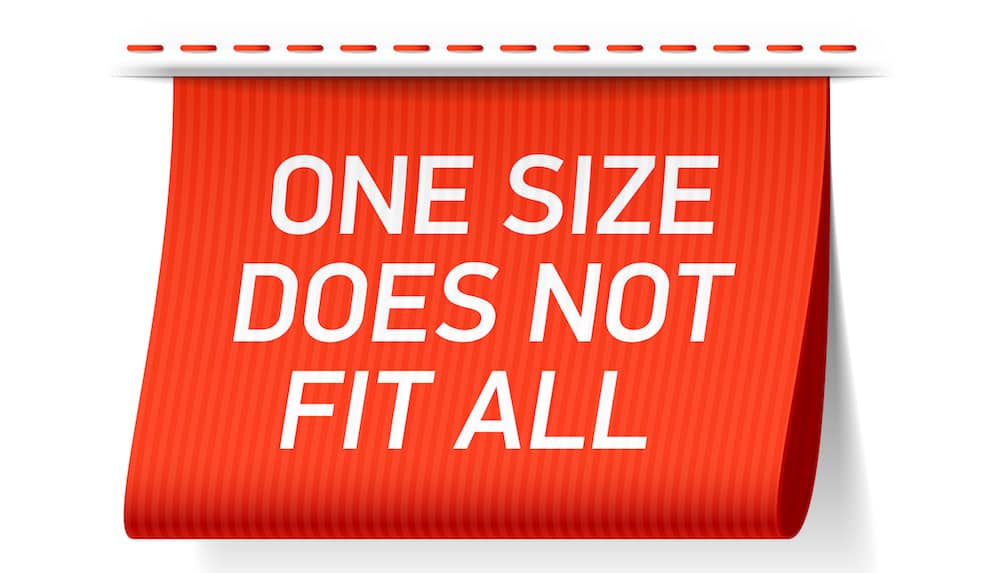Podcast Version:
I knew a guy a number of years ago who owned a gas station in Canada.
Nice, I thought. The guy sells gas, cigs, slushies and chocolate bars. He must be doing great.
I more or less asked how well the business does.
He tells me it’s good in many ways, but at the end of the day, he bought himself a job buying the gas station.
There’s not much he can do to make more money. The plus side is he makes a consistent amount of money year in and year out.
He’s pretty much controlled by the gasoline company who dictates much of the pricing, marketing, what he can sell, so on and so forth.
I was disappointed to hear that. Can’t be fun having to answer to some behemoth corporation.
Before knowing that guy, I had a roommate in the US whose family had some bucks. They had a 54′ yacht. House on the lake. Vacation pad in Florida. Money was no issue.
After I got to know him and realized this guy had so much money I asked what his dad did.
He tells me he owns 3 gas stations.
Whaaaaaaaaat?
You all live like that from 3 gas stations?
I didn’t ask that of course, but it was going through my head.
Now you know why I assumed the Canadian guy was rolling in it when he told me he owned a gas station.
What was the difference?
Turns out, the US roommate guy’s dad wasn’t nearly so controlled by the gas company. They bought gas, but they could run the store more or less as they wished.
Which meant selling booze, food and cigs by the truckload. He told me all their money was from selling beer, cigs and food.
To be fair to the Canadian gas station owner, the Canadian government doesn’t permit selling beer in gas stations. That’s a major problem but surely if granted some latitude by the gas company he could improve his bottom line like the US roommate without selling booze.
What it boils down to the Canadian gas station owner was forced to follow a carefully orchestrated system. Basically, it’s a franchise with very little latitude.
The US gas station owner had the freedom to run the real profit center as he wished. Gas brought in the traffic, the store made the profits. They sold what people wanted. They implemented strategies but had the freedom to run their business more or less as they saw fit.
For example, the Canadian gas station owner would not be able to open a restaurant as part of the business unless they got permission (which is unlikely).
The US gas station owner could open a restaurant if they wanted to. They could open a bar if they obtained the right license from the government.
A high level of control is important
No business owner has unfettered control. All businesses are subject to laws, regulations and industry rules at the very least.
I used to practice law which is heavily governed by a law society.
However, it’s a good idea to plan your business where you’re subject to the least amount of oversight and restrictions as possible. That definitely includes being controlled by corporate interests.
Interestingly, I’m subject to Google in two ways. I have to follow their display ad rules and dance to the search algo tune.
Most of us do. Google’s stranglehold on the internet pretty much subjects most website publishers to their terms.
What about affiliate marketing?
Arguably, affiliate marketing is about as free as it gets. While largely true, remember that at the end of the day the merchant controls the affiliate program.
I’ve been hosed by affiliate merchants 3 times.
First, I entered into a recurring commission arrangement with one company where they agreed to pay me 35% recurring commissions on their monthly subscription software. It was a great deal. I went to work. I promoted them for years.
Then one day they call me and tell me the commission is getting chopped down to 20%.
Nearly 50% of my recurring income vanished overnight.
Second, I had a huge amount of content published and ranking another software company. I was earning about $3K per month on auto-pilot. Unbeknownst to me, the company went bankrupt. It was purchased. The buyer refused to pay me $16K in unpaid commissions.
Third, again I had dozens of articles published and ranking promoting one merchant. One day I get an email saying they’re switching affiliate networks. While not fatal, it was a major hassle changing out all the links.
Merchants slash commissions or terminate affiliate programs all the time. If you’ve built up an entire website promoting such a merchant, you take a hit.
Sadly, even us bloggers who seemingly operate in the current Wild Wild West that is the World Wide Web, we are subject to controlling factors beyond our control.
What about entering into partnerships? Is that an unworthy loss of control?
Partnerships can work great or crash and burn. I prefer working on my own calling all the shots. That’s me. But I can see how partnerships can be an excellent arrangement. The two+ people have to bring something unique to table. When they do, it can be a win/win.
There’s a saying about the two most common reasons business partnerships fall apart. They are:
1. When there isn’t enough money, or
2. When there’s too much money.
What does that tell you?
It tells you, in a tongue and cheek sort of way, that partnerships are bound to break down. There’s always either too little or too much money. Go figure.
How do we minimize risk?
The only way to minimize risk is to diversify. But that’s not without problems.
Often diversifying is a distraction. In other words, in many cases you’re better off focusing on one thing instead of multiple projects.
However, depending on how you monetize or get traffic, you might need to launch a distracting second project to create a second income source.
I remember when my monthly revenue from promoting that software merchant paying me a recurring 35% commission hit $8,000 per month that I thought it might be a good idea to focus 100% on promoting them because it was going so well.
I decided not to because I knew I’d be too dependent on one merchant.
Instead, I continued growing sites monetized primarily from display ads.
Now my display ad revenue far exceeds affiliate commissions. In fact, my income sources are once again imbalanced – too much revenue from display ads.
Take bigger risks early then batten down the hatches
I’ve given a lot of thought to risk in this business.
Why?
I have a lot to lose.
I’ve also suffered big losses so I know firsthand it can happen and does happen.
Here’s what I think at this time.
If you want to take risks for a bigger/faster reward, do it early. That way if things go bad, you lose little.
A risk timeline in blogging should mimic that suggested by investors when planning for retirement.
When you’re younger, you should invest in higher risk growth-oriented investments. If something goes bad you have time recover.
When you’re older, it’s time to preserve wealth and minimize risk. If you make risky investments, you don’t have time to recover.
I believe the same could be said in this niche website publishing business.
When you’re starting out, you have nothing to lose except a few bucks. This is the time, if you’re going to take risks, to take them. Speed up the process. Get money rolling in.
Once money starts flowing, take the foot off the risk gas and go legit.
Do you have to take risks in the beginning?
No. You don’t. Not in this line of work anyway. It just takes longer, but it could be the right move.
The reason I say “take risks in the beginning” is for people who want to take risks. In that case, it’s best to do it early with less to lose.
Restrict it to calculated risks
While risk, in the beginning, is fine and probably good, that doesn’t mean you take stupid risks.
If you’re young, it’s not advisable to invest in penny stocks just because they might pay off big. Yeah, it’s possible a penny stock takes off, but it’s unlikely. That’s basically gambling. You might as well buy lotto tickets as your retirement strategy.
Instead, take calculated risks. Look for low risk, high pay off opportunities.
One risk that’s not worth it is violating Google AdSense TOS. These days the TOS aren’t hard to follow. Losing an AdSense account ties your hands potentially forever. It’s a big deal. The fallout is too much. Without AdSense, you pretty much obliterate your opportunities to monetize with display ads.
Instead, take risks in growing traffic. The worst that can happen is your site doesn’t grow. While that sucks, you can start over. When you lose an AdSense account, it’s game over with display ads.
But engage in smart link building. Put time and money into ranking buyer intent content that can earn a lot. Invest in link building with the lowest risk. There are such opportunities.
Once the money starts flowing, don’t get greedy and amplify the risk (it’s tempting). Instead, take steps to reduce the risk. Do less link building and put more into content. Pivot from only doing product promotion content to a more well-rounded site. In other words, go more legit.
At this point, it’s about preserving your assets. This means maybe slower growth, but by now you have a lot to lose.
What about promoting only ONE affiliate merchant?
While risky, if you’re making good progress, it’s fine in the early stages.
Again, once money rolls in, diversify. Promote other merchants. Sell products yourself. Monetize with display ads.
An example is starting with an Amazon affiliate website which is a very popular niche site strategy. By all means when starting, promote only Amazon. When these sites work (and many do), they can pay very well.
However, at some point, you want to diversify to reduce your dependence (i.e. risk) by only promoting Amazon.
What about focusing on one website only?
Again, it’s smart to focus on one website. It’s an “all your eggs in one basket” situation, but when starting out you don’t have a choice unless you’re well funded.
Grow that site and once it earns, launch one or a couple more. Even if you don’t plan to put much into them, it can be good to have some spare sites ready to grow sitting around.
What do I mean by spare sites ready to grow?
What I mean is that it takes 5 to 6 months for pretty much all new sites to start getting traffic from Google. It doesn’t matter how much content you add, it takes time to get traction.
Therefore, if you have a couple of spare sites that you publish an article or two per month on, they become aged sites in the process and are ready to grow if ever you need to grow another site.
I have a few “spare” or “rainy day sites”. I throw up some content on them each month. They make a few bucks each month. I keep them and put some money into them just in case I need to quickly grow another site down the road. I hope I never have to, but I’d much rather start with an 18-month site with 20 articles than start fresh with a new domain.
Get used to it
We’re not the only industry that struggles with loss of control and risk.
Brick and mortar stores are struggling due to changing shopping habits. That’s an uphill battle. I believe brick and mortar will thrive, but those that do need to bring their A-game and be innovative.
How about this for an example. Recently the government in my jurisdiction pretty much decimated the personal injury law industry by capping damages for minor injuries such as whiplash to $5,500. In the past, lawyers often got clients $30K+ for such injuries. Lawyers’ fees were 30% to 30% of that $30K which is not a bad payday for what was involved. Now there’s no money in it. Many personal injury lawyers are scrambling and pretty much starting over in different areas of law.
Talk about serendipity for me that I chose this risky line of work over a “stable” law career. Yes, my law practice was largely in the personal injury space. We’re not the first jurisdiction to make such changes. Many US states and Canadian provinces have changed to no-fault, which is even more catastrophic for personal injury lawyers.
I’m not telling you anything you don’t already know.
They should change the saying to “nothing can be certain except death, taxes and risk.”
Retain as much control as you can. Take calculated risks in the beginning. Over time, reduce risk via diversification and less risky behavior.

Jon Dykstra is a six figure niche site creator with 10+ years of experience. His willingness to openly share his wins and losses in the email newsletter he publishes has made him a go-to source of guidance and motivation for many. His popular “Niche site profits” course has helped thousands follow his footsteps in creating simple niche sites that earn big.






